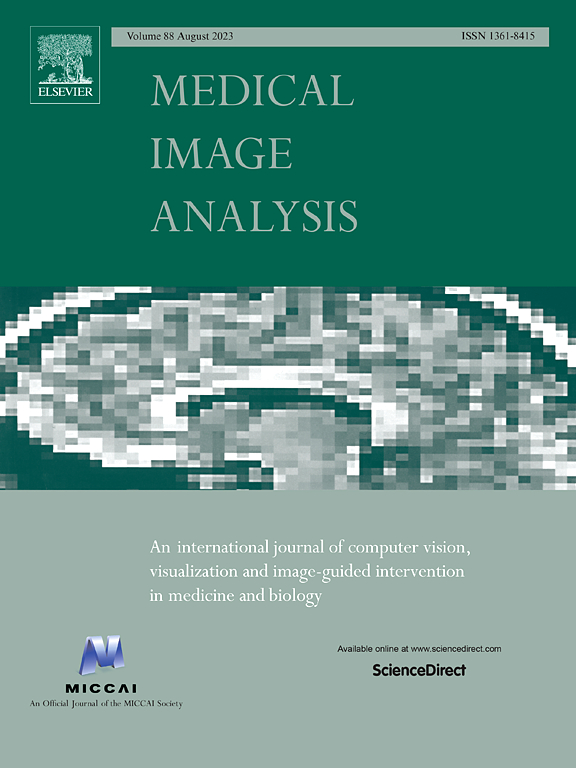Deep graph embedding based on Laplacian eigenmaps for MR fingerprinting reconstruction
IF 10.7
1区 医学
Q1 COMPUTER SCIENCE, ARTIFICIAL INTELLIGENCE
引用次数: 0
Abstract
Magnetic resonance fingerprinting (MRF) is a promising technique for fast quantitative imaging of multiple tissue parameters. However, the highly undersampled schemes utilized in MRF typically lead to noticeable aliasing artifacts in reconstructed images. Existing model-based methods can mitigate aliasing artifacts and enhance reconstruction quality but suffer from long reconstruction times. In addition, data priors used in these methods, such as low-rank and total variation, make it challenging to incorporate non-local and non-linear redundancies in MRF data. Furthermore, existing deep learning-based methods for MRF often lack interpretability and struggle with the high computational overhead caused by the high dimensionality of MRF data. To address these issues, we introduce a novel deep graph embedding framework based on the Laplacian eigenmaps for improved MRF reconstruction. Our work first models the acquired high-dimensional MRF data and the corresponding parameter maps as graph data nodes. Then, we propose an MRF reconstruction framework based on the graph embedding framework, retaining intrinsic graph structures between parameter maps and MRF data. To improve the accuracy of the estimated graph structure and the computational efficiency of the proposed framework, we unroll the iterative optimization process into a deep neural network, incorporating a learned graph embedding module to adaptively learn the Laplacian eigenmaps. By introducing the graph embedding framework into the MRF reconstruction, the proposed method can effectively exploit non-local and non-linear correlations in MRF data. Numerical experiments demonstrate that our approach can reconstruct high-quality MRF data and multiple parameter maps within a significantly reduced computational cost.
求助全文
约1分钟内获得全文
求助全文
来源期刊

Medical image analysis
工程技术-工程:生物医学
CiteScore
22.10
自引率
6.40%
发文量
309
审稿时长
6.6 months
期刊介绍:
Medical Image Analysis serves as a platform for sharing new research findings in the realm of medical and biological image analysis, with a focus on applications of computer vision, virtual reality, and robotics to biomedical imaging challenges. The journal prioritizes the publication of high-quality, original papers contributing to the fundamental science of processing, analyzing, and utilizing medical and biological images. It welcomes approaches utilizing biomedical image datasets across all spatial scales, from molecular/cellular imaging to tissue/organ imaging.
 求助内容:
求助内容: 应助结果提醒方式:
应助结果提醒方式:


